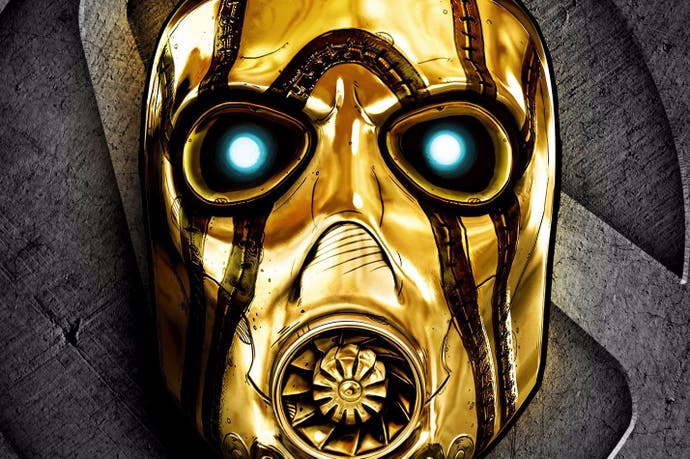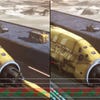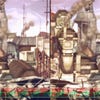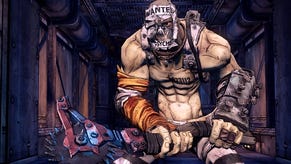Face-Off: Borderlands: The Handsome Collection
A handsome conversion to PS4 and Xbox One, marred by some ugly performance issues.
The Handsome Collection combines Borderlands 2, the Pre-Sequel and all of the DLC in one complete package for PS4 and Xbox One, targeting the sweet-spot 60fps experience frequently enjoyed by PC gamers. With Xbox 360 and PS3 versions of each title often delivering sub-optimal frame-rates during packed firefights, there's real potential here for a truly worthwhile upgrade, heightening the intensity of the brutal and intense action that makes the series so entertaining to play.
Built using a heavily modified Unreal Engine 3 - dubbed the Willow Engine by Gearbox - the PC versions of the Borderlands titles scale well across a range of hardware configurations, preserving a high level of graphical quality while allowing for high resolutions and frame-rates, even for those who can't afford to keep up with the latest and greatest in the GPU arms race. In theory, this should allow for a relatively smooth transition to PS4 and Xbox One, but the quality of the conversion work isn't quite as impressive as we'd hoped it would be. Indeed, the experience comes across as quite uneven across both consoles: impressive PC quality visuals are joined by highly variable performance that fails to deliver locked 60fps gameplay when and where it matters the most.
The positive news is that the Handsome Collection hands in native 1080p visuals across PS4 and Xbox One on both titles, featuring image quality in line with the PC version operating with post-process anti-aliasing. An almost identical form of FXAA is in play on current-gen consoles, with texture detail featuring the similarly smoothed appearance commonly associated with this technique. Coverage is a tad spotty on the Xbox One in comparison to the other platforms though, with some scenes receiving more coverage than others. This results in small bouts of extra sharpness on occasion, at the expense of more noticeable jaggies.
The lack of a better edge-smoothing solution is a little disappointing given other similarly undemanding options available such as SMAA, but on the plus side the pixel precision of the 1080p framebuffer allows the artwork to remain fairly crisp and clear, despite some compromises in texture integrity. The overall impression is that detail still boasts more depth and definition than the last-gen versions, adding a little more punch to the series' iconic cell shaded artwork. On PC, the blurring properties of the FXAA implementation can sometimes interfere with other rendering elements on screen, such as depth of field and cel-shading, causing the black outlines around characters and the environment to appear indistinct at times. Thankfully, this issue doesn't seem to manifest itself on PS4 and Xbox One, suggesting that the core post-process anti-aliasing algorithm has been revisited since the PC version launched.
Alternative comparisons:
- Borderlands: The Handsome Collection: PlayStation 4 vs PC
- Borderlands: The Handsome Collection: Xbox One vs PC
Taking a closer look at the game reveals that both console versions of the Handsome Collection are a match for the PC game running on the highest settings, minus the use of the Nvidia-powered PhysX effects and with a more constricted field of view that restricts the amount of visibility on offer. The viewpoint on consoles is clearly more restrained, making smaller corridors feel a little more claustrophobic, where the scope and complexity of the stylised environments is better realised. Reducing the FOV option down to 70 on PC delivers a close match to the PS4 and Xbox One releases, though it's not possible to adjust this setting on consoles.
From a technical perspective, a stroll across Borderlands 2's early glacial locations confirms that draw distances and the level of detail are almost fully interchangeable between all three formats, with scattered outposts on land and broken ice sheets across the the ocean fully resolved with very little in the way of level of detail (LOD) pop-in and other streaming issues. Texture filtering is also particularly impressive for a current-gen console game, with both PS4 and Xbox One using 16x anisotropic filtering - or something close to it. This leads to artwork appearing crisp and clear from a distance, avoiding the obvious blurring of texture details we see when using trilinear filtering in combination with mip-mapping. Here we find that it's only shadow quality that sometimes disrupts the impressive view, with these elements often rendered in low resolution until the player gets close.
Some streaming issues are still present in both Borderlands titles across all three platforms, though these rarely appear during gameplay. Transitions between texture map layers, shadows, and lighting are frequently visible when first loading up a new area or after a respawn - a common issue that continues to affect UE3-derived titles to this day, leaving blurry and simplified artwork on screen for longer periods than we'd like. For the most part, assets load more quickly on PC, where low quality textures are mostly left on-screen for a minimal amount of time. By comparison it takes a few seconds longer for the consoles to resolve the full array of environmental details, with PS4 and Xbox One operating at a similar level. Shadows and lighting frequently can load more quickly on the PS4, whereas Xbox One has a tendency to fully resolve higher resolution textures ahead of its Sony counterpart.
So far, Borderlands: the Handsome Collection shapes up nicely in delivering a PC-level graphical experience on current-gen consoles. High resolution alpha buffers are deployed across PC, PS4 and Xbox One, while a heavy depth of field effect gives an extra boost of cinematic flair to the cut-scenes. However, the use of PhysX on PC is a major stand-out point for the platform over the console releases, and certainly adds a nice layer of dynamic interaction with the environments and effects not seen on the consoles.
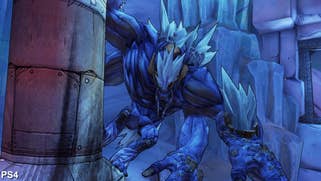
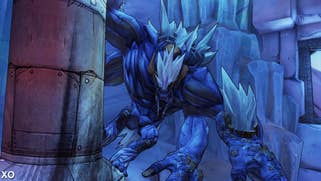
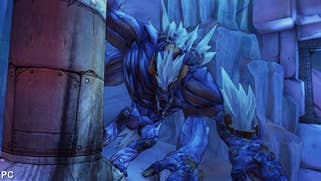
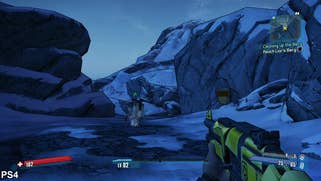
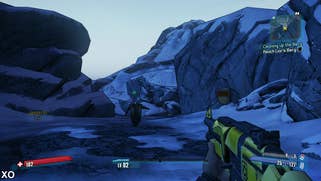

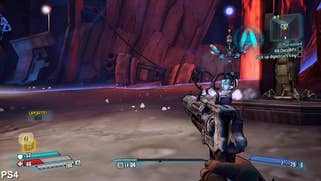
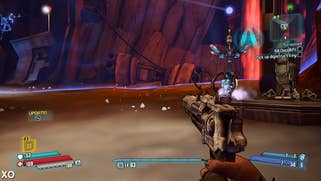
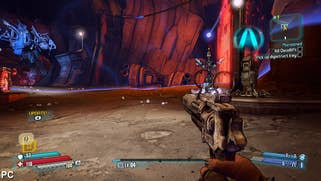
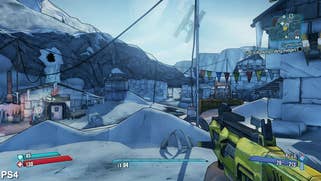
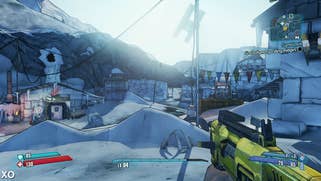


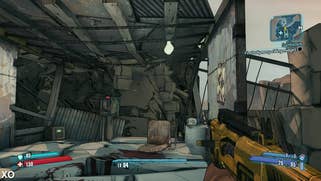
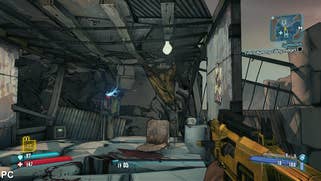
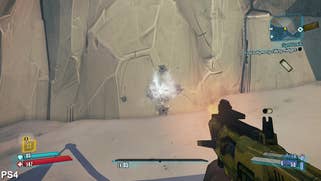
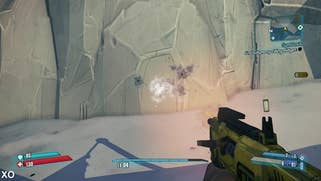


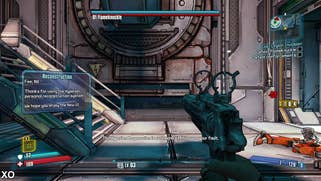
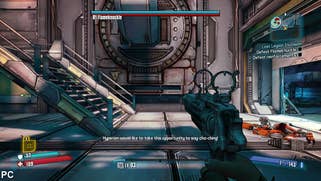
Using PhysX, polygonal debris is liberally scattered across the environment during firefights as the scenery is sprayed with bullets. These small rocks and lumps of ice feature material properties that adjust how they react when colliding with characters and other objects. Similarly, exploding barrels and vehicles also leave rubble across the ground, whereas debris and particles dissipate once the fireworks are over on consoles, leaving only flat alpha-based scorch marks over surfaces nearby. Pump a few rounds of lead into human enemies or any number of aggressive local wildlife on the PC game and watch as pools of blood fly out of wounds before condensing onto the ground. Fluid simulation allows the expelled plasma to react with gunshots and other objects, rippling as bullets break through the surface. In comparison, blood spatters are rendered on the ground as flat texture changes on console.
The implementation of PhysX doesn't stop there. Environments also feature added interactive details in the form of hanging banners and flags that wave, ripple, and crease in the wind. These elements violently swing through the air when shot, eventually tearing and falling apart after repeated punishment. On consoles, flags only feature scripted animation simulating wind-related movement and lack any kind of player interaction. PhysX-based effects are available for Nvidia cards on PC, though an .ini file hack allows the tech to run on CPU for AMD users (albeit with a significant performance penalty). While it's a shame that these effects weren't factored into the Handsome Collection, the chances are that the horsepower simply isn't there to run them.
It's a state of affairs all but confirmed when looking at game performance. Borderlands attempts to deliver a top-end 60fps experience on PS4 and Xbox One, but gameplay is frequently compromised with heavy frame-rate drops and regular screen tearing - issues that are more prevalent in the Pre-Sequel. Things start off positively enough though: exploring Hyperion's space station for the first time, we are presented with a smooth 60fps frame-rate on both current-gen consoles, immediately giving the game a fluid and responsive feel that the Xbox 360 and PS3 versions couldn't possibly hope to match. The added temporal resolution allows the artwork and almost slapstick animation to stand out more confidently, better bringing Gearbox's zany post-apocalyptic styled world to life.
Unfortunately, this level of satisfaction doesn't last long, and within a few minutes, frame-rates start crashing down as we encounter the first couple of firefights. Our first major battle in an expansive control room sees performance drop down into the mid 40s across both PS4 and Xbox One, immediately creating a jarring mix of judder and a distracting loss of controller response. Both versions feature adaptive v-sync, where the engine sends out a torn frame when it runs over its 60Hz rendering budget and is unable to deliver a complete frame in time for the next refresh. As such, drops in fluidity are regularly joined by bouts of screen-tearing on both consoles, though the Xbox One is far more heavily affected, with near constant tearing occurring during both large and smaller scale skirmishes. The experience under these conditions is still a clear cut above the 25-30fps update present on the 360 and PS3 under similar circumstances, but doesn't hold up well to the solid 60fps gameplay present in less demanding areas of the game.
Performance is often heavily compromised in the Pre-Sequel, which is disappointing given that Borderlands' hectic gunplay stands to benefit immensely from a solid 60fps update. It's all about killing stuff for loot, and yet this is key aspect of the title is most affected by the performance issues. Shoot-outs frequently cause the engine to buckle under the strain of handling multiple foes on-screen, in addition to the range of particle effects and alpha that appear when combat becomes especially heated.
Areas with longer draw distances also cause problems for the Pre-Sequel too. Exploring further onto the moon's rocky surface in the Serenity's Waste region sees an abundance of tearing on Xbox One, causing a distracting wobble when traversing this area. Here, the PS4 game sticks much more closely to 60fps, dropping fewer frames and tearing less frequently, though neither version delivers a suitably stable level of performance expected from a last-gen remaster running on new console hardware.
Outside of combat, the Pre-Sequel regularly offers up a decent slice of 60fps gameplay across both consoles in less detailed areas, mostly free from any unwanted hiccups. The Xbox One game still has a tendency to drop or tear the occasional frame, whereas in similar scenes performance remains stable on PS4. But for the most part, things remain consistently smooth across both formats when the engine isn't being taxed too heavily. Here we are given a true visual and gameplay leap above the last-gen consoles, a taste of the kind of upgrade we would hope to see across the board on both PS4 and Xbox One.
Perhaps because it's the older, less demanding game, but Borderlands 2 comes across as the smoother of the two games in the package: the desired 60fps update is adhered to more closely when the engine is under load, though hefty frame-rate problems still occur in more detailed areas when gunning down multiple enemies. As with the Pre-Sequel, the PS4 holds up better than its Xbox One counterpart, with less tearing and fewer frame-rate drops producing slightly less judder during gameplay. In particular, the appearance of bloom and light shafts as dusk approaches causes a noticeable dip in performance in areas that are otherwise smooth at night-time. In one affected scene, we see the Xbox One game momentarily drop to around the 30fps mark when first entering Liar's Berg for the first time, while things appear more stable on the PS4.
As an aside, cut-scenes covering major plot points in the Pre-Sequel are rendered in real-time, featuring enhanced visuals over the regular 60fps targeted cinematics mostly found throughout the game. Visual upgrades here consist of more realistically rendered environments along with an added layer of shader effects. The stylised cel-shading look is partially toned down here, lending a more CG feel to the environments. These segments are capped at a more manageable 30fps, which mostly remains stable, although frame-pacing issues are a frequent problem on the PS4, leading to noticeable stutter that upsets the filmic nature of these scenes. By comparison, tearing is the main issue on the Xbox One, adding a distracting screen wobble into the mix. We can't help but think that using offline-rendered video sequences would be a better solution, the only problem being that the examples we have of FMV in the Handsome Collection in Borderlands 2 feature really poor video encoding.
Borderlands: the Handsome Collection - the Digital Foundry verdict
Borderlands' gunplay, humorous dialogue and intense action is as entertaining as ever, and in many ways this is a clear upgrade over the last-gen console versions of the game. Full HD resolution certainly helps the stylish artwork to stand out more strongly, while higher frame-rates make aiming and shooting feel noticeably smoother too. Unfortunately, overall performance is extremely variable across both consoles, with the experience feeling especially compromised during those intense gunfights that define what Borderlands is all about - shooting and looting. Both consoles struggle to keep things running consistently at 60fps, though it is the Xbox One game that comes off worse for wear owing to the heavier bouts of screen tear.
It's a shame that significant issues mar the experience because the Handsome Collection on the PS4 and Xbox One has a lot going for it. For example, it's possible to transfer save files from last-gen systems over to PS4 and Xbox One, allowing players to continue with all their loot and progress intact. It's a beautiful feature, though the content transfer is locked to Sony and Microsoft's ecosystems, so it's only possible to transfer data between PS3 and PS4 or Xbox 360 and Xbox One. If you're one of the many 360 owners to transition across to PS4 (or indeed from PS3 to Xbox One), you're out of luck.
On a more promising note, Gearbox is currently looking to tackle the performance issues, though it is asking users to remain patient for an update. Hopefully, we'll be treated to a more stable 60fps experience, or at the very least a massive reduction in the excessive amount of screen-tear - we'll report back should the game receive the performance upgrade it deserves. But right now, the PC version remains the best way to play the game at 60fps, scaling well to run on mid-range hardware while offering up an excellent boost in effects work via PhysX for those with higher-end Nvidia systems.
